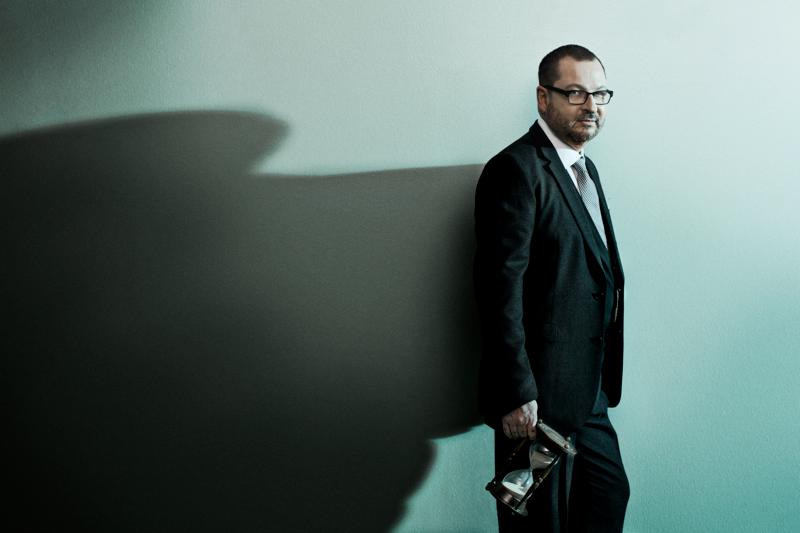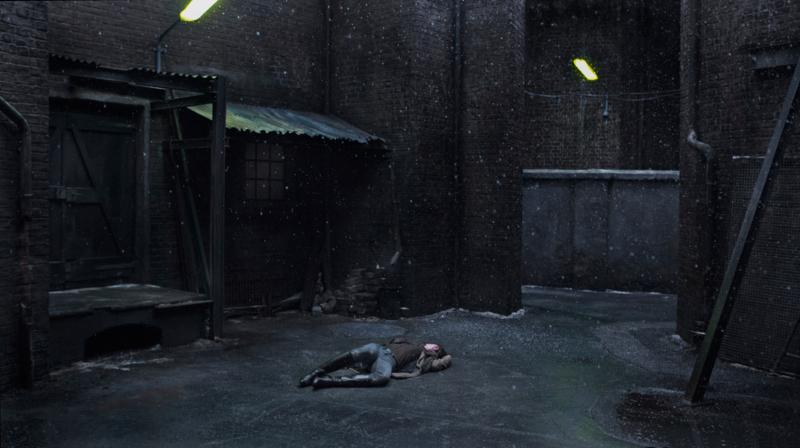
'Nymphomaniac' is Lars von Trier's new provocative work. It stands out by its narrative style, a style of digressions, but in particular by the themes it presents: female sexuality, humiliation, revenge. It is a cinema of cruelty, a cinema of punishment – and self-punishment. Forget about love, as the tagline says.
In the months to come, a lot of critics and commentators will undoubtedly be analysing the film. Von Trier, with his complex and ambiguous films, has a unique talent for keeping the interpretation industry occupied. His satirical wit and intellectual energy challenge us with allegories and symbolic acts that call for interpretation – much like the inkblots of psychology's Rorschach Test.
The following is not an interpretation of 'Nymphomaniac' but a brief presentation of certain tendencies and traditions in Danish culture and society that constitute the background of von Trier and his career and may explain some aspects of his new film.
Modernity and Freethinking
Denmark has a history of what usually translates as Cultural Liberalism. In Denmark we call it Cultural Radicalism, which makes it sound more revolutionary than it actually is. It refers to an intellectual trend of modernity and enlightenment that started in the late 19th century as an action against conventionality and hypocrisy and was typically, but not exclusively, left wing, pro-free speech, anti-church and anti-nationalist.
The founder and dominant figure of this tradition was Georg Brandes (1842-1927), a Danish-Jewish critic who was behind what we call the Modern Breakthrough of the 1870s, which brought realism, social and psychological modernity, secular and Darwinist thinking, not only into Danish literature but generally into European culture in the fin-de-siècle era. Brandes, who became an icon of autonomy, freethinking and free love, had a wide international network and was in close contact with Ibsen, Strindberg and Nietzsche, whom he brought to the world's attention.
When Brandes died in 1927, the role of fearless scold of his times was taken over by Poul Henningsen (1894-1967) [1], a Danish architect, designer – his lamps are famous – writer, debater and, on one outstanding occasion, also filmmaker. In Henningsen, liberated, anti-bourgeois modernity found its most significant voice in the '30s, '40s and '50s. He represented liberal-minded and secular views on art, politics, parenting and sexuality that influenced younger intellectuals, in particular.
This brings us to von Trier. His parents, who were young in the 1930s, belonged to this segment.

Growing Up without Any Rules
Trier, who invented his "von" as a sarcastic joke in his youth, grew up in an affluent neighbourhood north of Copenhagen in a typical "cultural liberal" home. His parents, both academics and civil servants working at ministries, were left wing: a Jewish but non-religious father (who, it later turned out, was not his biological father) and a communist mother who took part in the resistance movement during the German occupation of Denmark (1940-45). Two of the most important Danish communist writers of the period, Hans Kirk and Hans Scherfig, would visit von Trier's childhood home, and his mother worshiped Bertolt Brecht (whose influence on von Trier's 'Dogville' is obvious).

Von Trier had a childhood in which the child – in accordance with the new ideas about parenting – was respected as a creative individual with full integrity. Perhaps paradoxically, von Trier has pointed to this freedom, his upbringing without any rules, as the main cause of the anxiety attacks he has struggled with throughout his life.
Mad, Suffering Artists
The young Lars Trier was fascinated by European fin-de-siècle culture, with its decadence, death drive and misogyny. Nietzsche and Strindberg, in particular, were important inspirations for him, pointing back to the heritage from Brandes.
They remain important inspirations for the not-so-young von Trier. This is evident in 'Antichrist', the result of a Strindbergian "inferno crisis" (the title, of course, came from Nietzsche), and in 'Nymphomaniac'. Compare the Uma Thurman scene with Strindberg's one-act play, 'The Stronger'.
As a child, von Trier acted in a children's TV series, while he made his first public statement as an adult in 1976, at 19, with an article in a local newspaper [2]. The photo shows a young man who is already consciously constructing his artistic persona. The article is about Strindberg and his madness, and Edvard Munch, the painter, and his madness. Von Trier liked the idea of mad, suffering artists. The self-portrait of the artist as a young man, with a vampire-like drop of blood and Calvary in the background, shows how he saw, or imagined, himself [3], contrary to the nice young man in the photo taken from around the same time (c. 1975) [4].


Freedom and Pornography
Danish culture and society in the years when von Trier grew up were marked by a political decision that could be seen as a sensational triumph for cultural liberalism, though it was mainly the product of a right-wing government. Denmark was the first country in the world to abolish laws against pornography – text in 1967 and images in 1969.
Moreover, in 1969, Denmark was the first country to abolish film censorship for the grownup population (in 1997 all film censorship was abolished). Scandinavian cinema had already acquired an international reputation for daring sexual frankness in the years before – the Danish film 'A Stranger Knocks' and the Swedish films 'The Silence' (by Ingmar Bergman) and 'I am Curious' were sensations abroad.
In Denmark, the legalization of pornography was, perhaps somewhat naively, seen as a victory for freedom of expression – in line with the new spirit of liberation that washed over the Western world in the 1960s. This new freedom, however, did not result in an explosion of pornography in Danish films. Instead a number of light erotic comedies were put out that in often bizarre ways combined sexual elements with the traditional Danish folk comedy. One example, 'Agent 69 Jensen in the Sign of Sagittarius' (1978), shows us the legendary Danish King Christian IV among hedonistic activities in a weird hospital – a grotesque mixture of hardcore sex, hospital farce and flag-waving.
While the Danish pornographic film business faded out relatively quickly – puritanical America very soon took over and established an adult film industry even bigger than Hollywood – the myth of Scandinavia as a haven of pornography lives on to this day, and von Trier's new film 'Nymphomaniac' will very likely add to the myth. Certainly, sexuality has always been an important element of fascination in von Trier's work, though he does not connect to the jovial, humorous Danish tradition but rather, as in Bergman's oeuvre, presents sexuality as a field of torment, obsession and depravity. Not only did von Trier read Nietzsche, Strindberg and Freud as a young man, he was also fascinated by Pauline Réage's 'The Story of O' and Marquis de Sade's 'Justine', as well as films like Cavani's 'The Night Porter' and Pasolini's 'Salò', which he later re-imported for distribution in Denmark.
Chains and Whips Revisited
Von Trier's fascination with sexuality as a dark, demonic force is quite evident in the first two films he made during his student years in the late '70s. Privately financed, 'The Orchid Gardener' and 'Menthe la bienheureuse' (freely adapted from 'The Story of O') with their chains and whips and lustful punishment clearly anticipate both 'Antichrist' and 'Nymphomaniac'.
Von Trier has largely kept these films out of view for the last 35 years, but a few years ago – when he was still making public statements – he said "that 'Antichrist' quite well referred back to the first film I made, 'The Orchid Gardener' – with the masculine and the feminine."
Sexuality also haunts his first feature, 'The Element of Crime' (1984), with its sexual serial killings of little girls and a detective who tries to solve the case through a sadistic relationship with a prostitute. 'Breaking the Waves', his international breakthrough, daringly mixes sexual abuse and religious self-sacrifice. 'The Idiots', his Dogma film, includes a group sex scene (with professional porn actors lending authenticity). It is perhaps significant that when, as an exception, he made a film, 'Dancer in the Dark', that had no sexual theme at all, he won the Golden Palm in Cannes. 'Dogville' is about sexual molestation and humiliation, while in 'Antichrist' the sexual theme is pursued with maximum attention, as now again in 'Nymphomaniac'.
Both 'Antichrist' and 'Nymphomaniac' can be seen as heroic attempts to take explicit and transgressive sexuality back from the adult film industry. Sexuality is far too serious an issue to be left to the porn industry.
Scorn, Mockery and Ridicule
Two other significant examples should be mentioned – one older, the other quite recent – illustrating the Danish tradition of freedom of expression and the controversies it can create.
In 2005, the right-wing daily Jyllands-Posten, seeking to challenge self-censorship in the Danish media, asked a number of cartoonists to portray the prophet Muhammad, an offence against the traditional Muslim ban on representing the prophet. The newspaper made the argument that "In a society with democracy and freedom of speech one should be prepared to endure scorn, mockery and ridicule." As is well known, rather large groups of the world's population were not prepared to endure this.
More than 30 years earlier there had been a somewhat parallel case. In 1973 a screenplay by the Danish painter, filmmaker and happening-artist Jens Jørgen Thorsen was recommended for state support under the Film Commissioner Programme of the newly established Danish Film Institute. The screenplay, 'The Many Faces of Jesus', presents Jesus as a modern, very sexually active terrorist. A scandal soon erupted. Over the next couple of years, thousands of protest letters poured in from all over the world. The Pope condemned Denmark as "the pigsty of the world." After heavy political pressure, both national and international, state support was withdrawn. The motivation was that the film would offend the moral rights of the evangelists. There was, it turned out, a limit to the Danish freedom of speech after all.
Thorsen, who had himself photographed crucified and nude, appealed the decision and 11 years later, the decision was ruled to be illegal. But the film was never made. Numerous artists had voiced their support for the anarchist and hedonistic dissident, including the young von Trier.
Scandalous Sarcasm
It is this Danish tradition of intellectual protest, of controversial statements about sex, religion and conventional humanistic values, that forms the background for von Trier's work.
He is a specialist of sorts in tweaking conventional, politically correct issues and opinions. His Hitler remarks in Cannes 2011 were heard around the world. The incident, in some ways, paralleled the cartoon controversy. In both cases, expressions that are acceptable in the Danish tradition of "scorn, mockery and ridicule" appear scandalous when made in an international forum. Hitler and the Holocaust are not issues to be treated with sarcastic detachment (though isn't that exactly what Tarantino did with 'Inglourious Basterds' at the same festival?)
A more local example of von Trier's sarcasm goes back to 2003. That year, a Danish political activist, to protest against Denmark's participation in the Iraq War, faked his way into the Danish parliament in Copenhagen and threw red paint in the face of Prime Minister Anders Fogh Rasmussen. During the run-up to the election two years later, von Trier made himself up in the same way, with paint/blood on his face, and released the photo to the press with a statement against the right-wing government, in particular the nationalist party that guaranteed the government its majority in parliament: "Dear Anders Fogh … your parliamentary basis is still filthy!"
Von Trier's films are full of provocative views. In 'Dogville', the massacre of the innocent – and the not so innocent – seems to be justified. In 'Manderlay', slavery seems to be justified, which insulted many American critics. And in 'Antichrist', the nameless woman, seemingly representing womanhood, is linked to the evil of nature and, of course, feminist commentators generally hated the film.
However, we can't necessarily deduce von Trier's personal opinions from his films. With typically evasive irony, he once said, "One of my techniques is to defend an idea or a view that is not mine" (The Observer).
What about Male Sexuality?
'Nymphomaniac' is the latest work in which von Trier controversially presents a vision of woman, a new variation of the femme fatale. After all of these haunting explorations into the dangerous wilderness of female sexuality, which continues to loom as a dark, mysterious enigma, one might ask, What about male sexuality?
In fact, there is a von Trier film on the subject, a commercial, often called Sauna, that he made in 1986 for the Copenhagen tabloid Ekstra Bladet (search for Ekstra Bladet pub on YouTube). The camera roves in a men's sauna, where a young man discovers that a vent in the wall lets him peek into the women's sauna. A stern matronly attendant on the other side notices the eyes behind the vent and angrily lines up all the men in order to find the culprit. There he stands, hiding his erect member under a newspaper. The punch line goes, "What would we do without Ekstra Bladet?" Here we get von Trier's judgment on male sexuality. It's a very simple thing: no death or a demonic fall into darkness – just desire, with a visual angle.
You will note that, while von Trier has investigated female sexuality over several hours in several films, it takes a lot less time to present male sexuality. The Ekstra Bladet commercial is male sexuality and Danish cultural liberalism – in 45 short seconds.


